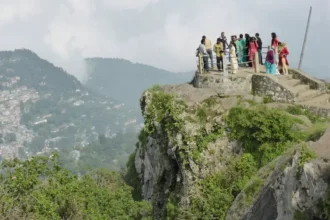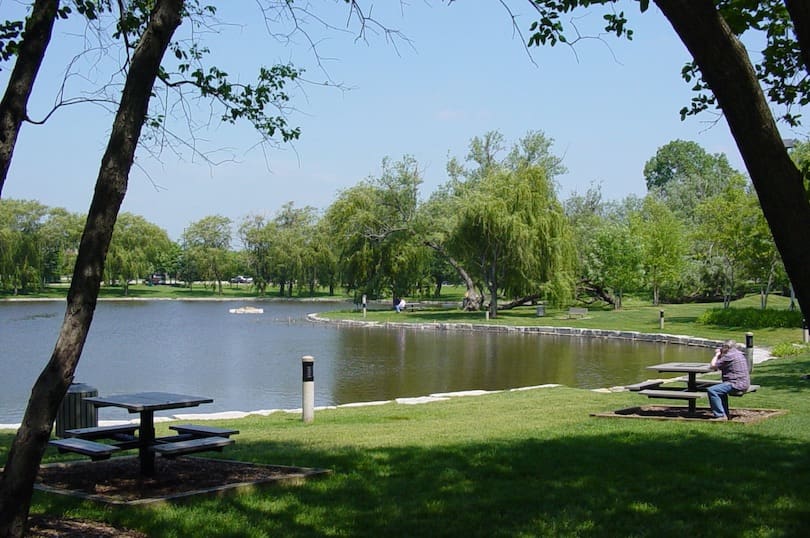Welcome to Hampi, a UNESCO World Heritage Site in the Indian state of Karnataka. Nestled amidst the captivating ruins of the Vijayanagara Empire, Hampi offers a glimpse into the grandeur and splendor of a bygone era. One of the most captivating structures within this archaeological marvel is the Lotus Mahal. In this article, we will embark on a journey to explore the intricacies and beauty of the Lotus Mahal, Hampi, delving into its history, architectural significance, and cultural relevance.
1. The Origins of the Lotus Mahal, Hampi
The Lotus Mahal, also known as Chitragani Mahal or Kamal Mahal, is an exquisite edifice that dates back to the 16th century. This elegant structure served as a recreational palace for the royal women of the Vijayanagara Empire. Its unique design blends elements of Hindu and Islamic architecture, showcasing the cultural fusion prevalent during that period.
2. Architectural Marvel: The Design of Lotus Mahal
The Lotus Mahal stands out among the vast array of architectural wonders in Hampi due to its graceful and feminine design. The structure derives its name from the lotus bud-shaped dome that crowns its top. Let’s take a closer look at the remarkable features that make this architectural gem truly captivating:
2.1. Lustrous Beauty: The Exterior
The exterior of the Lotus Mahal is adorned with intricate carvings and delicate latticework, showcasing the exceptional craftsmanship of the artisans of the Vijayanagara Empire. The walls are embellished with ornate motifs, depicting mythical creatures, celestial beings, and floral patterns, which add to the grandeur of the palace.
2.2. Aesthetic Harmony: The Interior
As you step inside the Lotus Mahal, you are greeted by a harmonious blend of open spaces, arches, and elegant pillars. The interior is characterized by a cool and breezy ambience, owing to the ingenious ventilation system that allows air to circulate freely, providing respite from the scorching heat of the region.
3. Historical Significance of Lotus Mahal, Hampi
The Lotus Mahal holds immense historical importance, as it offers valuable insights into the lifestyle and architectural preferences of the Vijayanagara Empire. Let’s delve deeper into its historical context:
3.1. Royal Retreat: Leisure and Recreation
The Lotus Mahal served as a retreat for the royal women, providing them with a tranquil and opulent space to engage in recreational activities. It was here that the queens and princesses indulged in music, dance, and intellectual pursuits, surrounded by the beauty and serenity of the palace.
3.2. Symbol of Power: Vijayanagara Empire
The construction of such a magnificent palace reflects the power and influence wielded by the Vijayanagara Empire. The Lotus Mahal stood as a testament to the opulence and prosperity of the empire, while also showcasing the artistic and architectural brilliance of the time.
4. Cultural Significance and Influence
The Lotus Mahal, Hampi, not only offers architectural splendor but also holds cultural significance. Let’s explore its cultural impact:
4.1. Architectural Fusion: A Blend of Styles
The Lotus Mahal showcases the fusion of Hindu and Islamic architectural styles, symbolizing the religious and cultural harmony prevalent during the Vijayanagara Empire. The coexistence of these diverse influences in a single structure is a testament to the inclusive nature of the empire.
4.2. Inspiration for Contemporary Architecture
The beauty and elegance of the Lotus Mahal continue to inspire architects and designers to this day. Elements of its design can be seen in modern buildings, as it serves as a timeless muse for those seeking to incorporate a touch of history and grandeur into their creations.
Conclusion
In the heart of Hampi lies a jewel from the past, the Lotus Mahal. This architectural masterpiece stands as a testament to the opulence and grandeur of the Vijayanagara Empire. Its elegant design, fusion of architectural styles, and cultural significance make it a must-visit destination for history enthusiasts and architecture lovers alike. As you wander through its halls, adorned with intricate carvings and delicate latticework, you can’t help but be transported to an era of regal splendor. So, plan your visit to the Lotus Mahal, Hampi, and immerse yourself in the magnificence of this ancient wonder.
FAQs about Lotus Mahal, Hampi
To provide you with a comprehensive understanding of the Lotus Mahal, here are some frequently asked questions:
5.1. Is Lotus Mahal, Hampi open to the public?
Yes, the Lotus Mahal is open to the public. Visitors can explore the architectural marvel and admire its beauty.
5.2. Are there any entry fees for visiting the Lotus Mahal?
There is an entry fee for visiting the Lotus Mahal, which is used for the maintenance and preservation of the site.
5.3. What is the best time to visit the Lotus Mahal, Hampi?
The best time to visit the Lotus Mahal and Hampi is during the winter months, from October to February, when the weather is pleasant and suitable for exploring the ruins.
5.4. Can I take photographs inside the Lotus Mahal?
Yes, photography is allowed inside the Lotus Mahal. Capture the beauty of the palace but remember to be respectful and not disturb other visitors.
5.5. Are there any guided tours available for the Lotus Mahal?
Yes, guided tours are available for visitors who wish to learn more about the history, architecture, and cultural significance of the Lotus Mahal. It is recommended to avail of these tours for a more enriching experience.
5.6. Can I visit other attractions in Hampi after exploring the Lotus Mahal?
Certainly! Hampi is home to numerous other remarkable structures and archaeological sites. You can continue your exploration and visit places like the Virupaksha Temple, Vittala Temple, and the iconic Stone Chariot.














